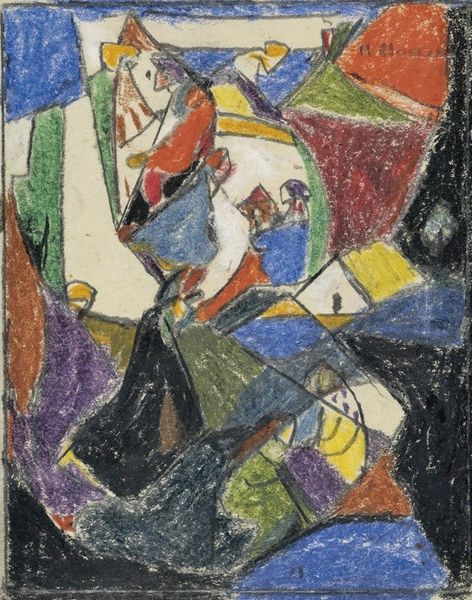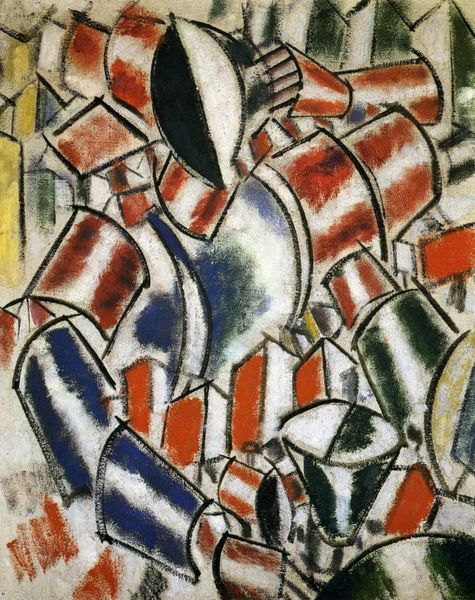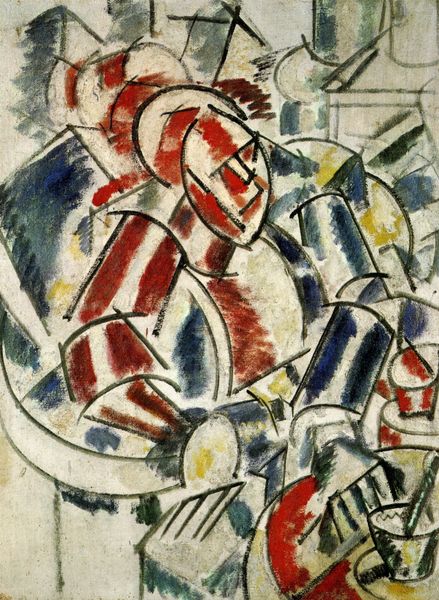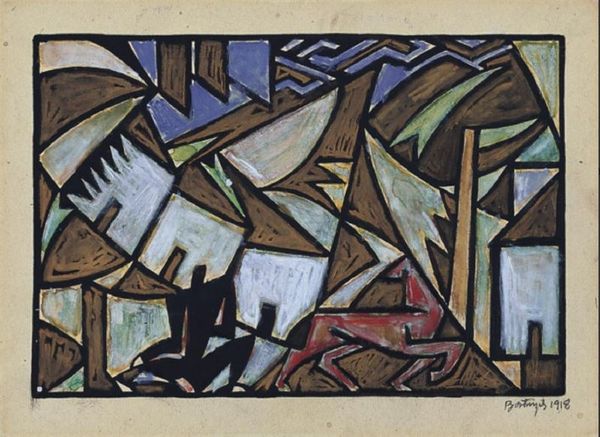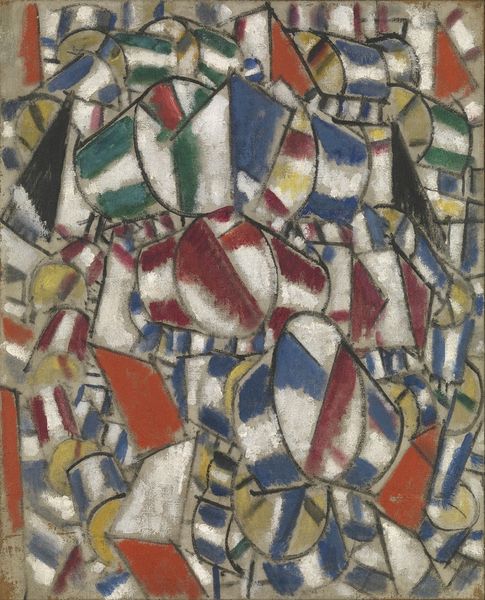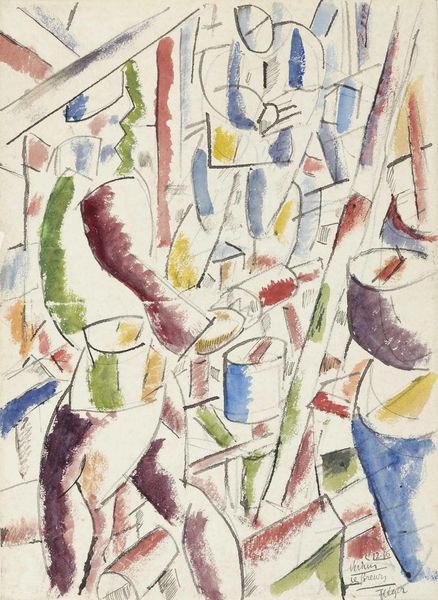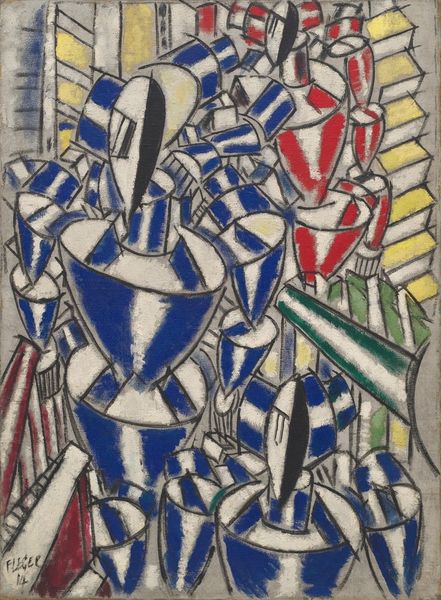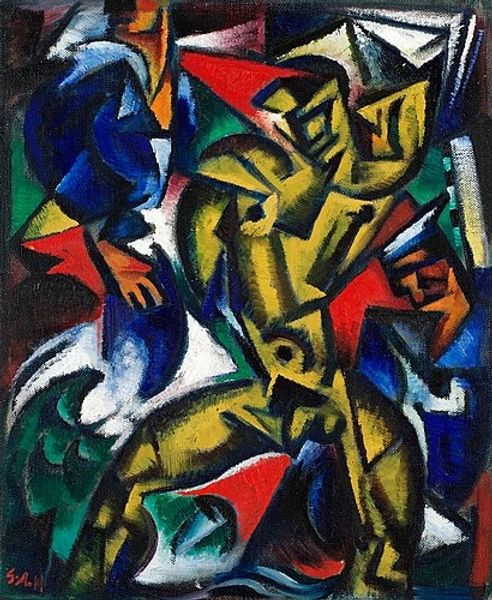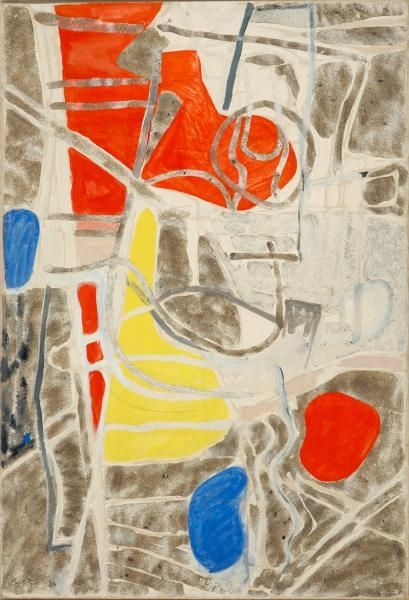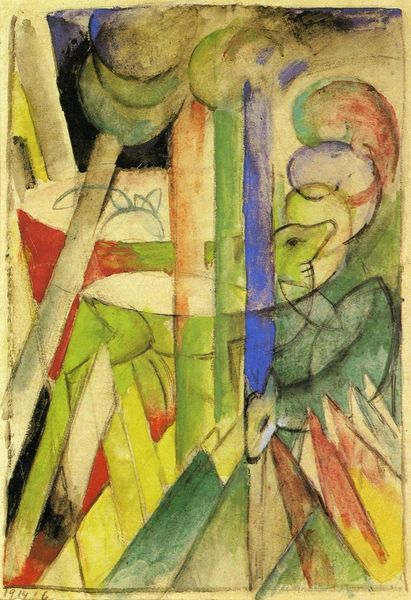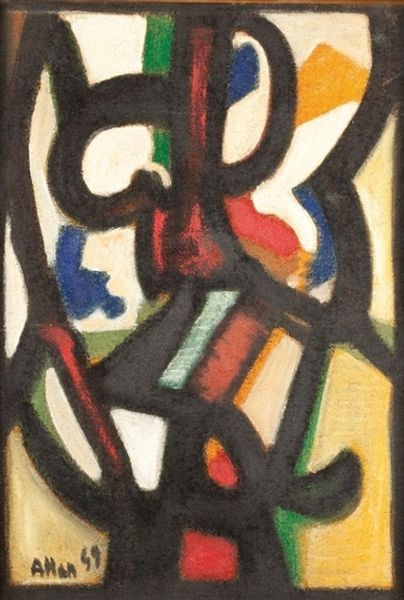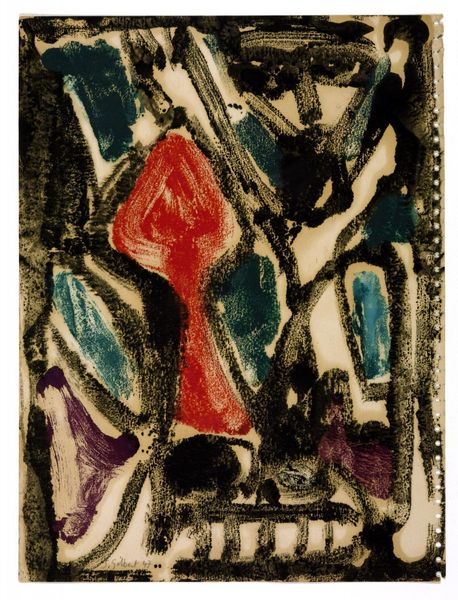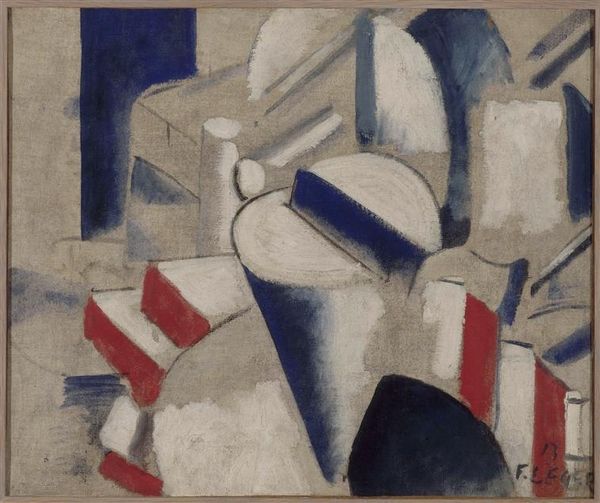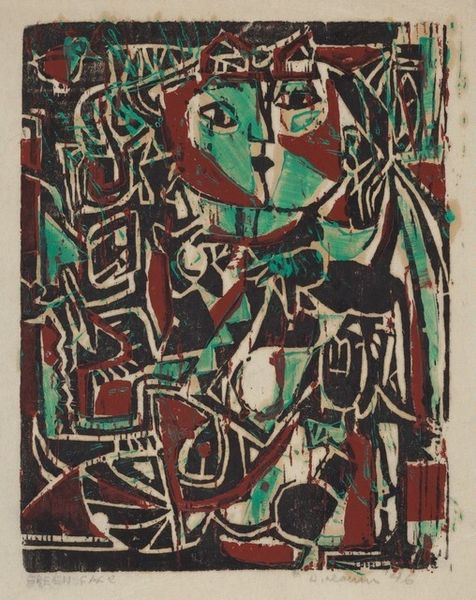
painting, oil-paint
#
cubism
#
painting
#
oil-paint
#
coloured pencil
#
geometric
#
abstraction
#
cityscape
#
modernism
#
watercolor
Dimensions: 65.5 x 58.5 cm
Copyright: Public domain US
Editor: This is Fernand Léger's "July 14," painted in 1914 using oil paint. At first glance, it looks like an abstract cityscape, maybe a little chaotic, but definitely festive with those bold colors. What do you see in this piece, especially given its historical context? Curator: Beyond its purely formal qualities, I see a visual representation of pre-war tension. Léger painted this just weeks before the outbreak of World War I. The abstracted flags, fragmented architecture—these elements can be interpreted as the fracturing of European society on the eve of massive conflict. Do you think the date of this piece – the French National Day – serves as a clue? Editor: Definitely. It's not just an arbitrary title; it speaks directly to French identity. The date juxtaposed with the fracturing we see feels like a statement. Were artists at the time using abstraction as a way to reflect broader social anxieties? Curator: Absolutely. Modernist movements like Cubism and Futurism were dismantling traditional artistic conventions just as the world was dismantling traditional power structures. Abstraction allowed artists to explore the underlying forces shaping society, forces often invisible but deeply felt. Think about how traditional, figurative art often upheld specific ideals and social hierarchies, which abstract expression challenged. Editor: So Léger's abstraction here isn't just about aesthetics; it’s a commentary on the political landscape? The geometric shapes create an urban environment that looks dynamic, energetic but it could also suggest industrialization destroying the world. Curator: Precisely. The painting can also reflect the increasingly mechanical nature of modern life, foreshadowing the mechanized warfare to come. By employing abstract representation, Léger opens possibilities of social and ideological exploration of the world, engaging with his public in novel ways. What does the political and social impact of paintings mean for today? Editor: This connection definitely provides food for thought. Thank you! Curator: It has been my pleasure. I have also benefitted from seeing this in the present and our contemporary social perspective.
Comments
No comments
Be the first to comment and join the conversation on the ultimate creative platform.
